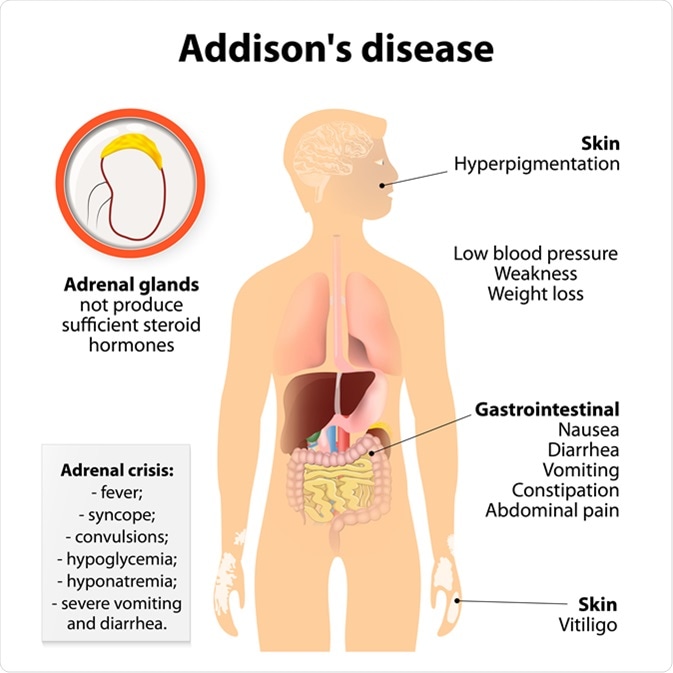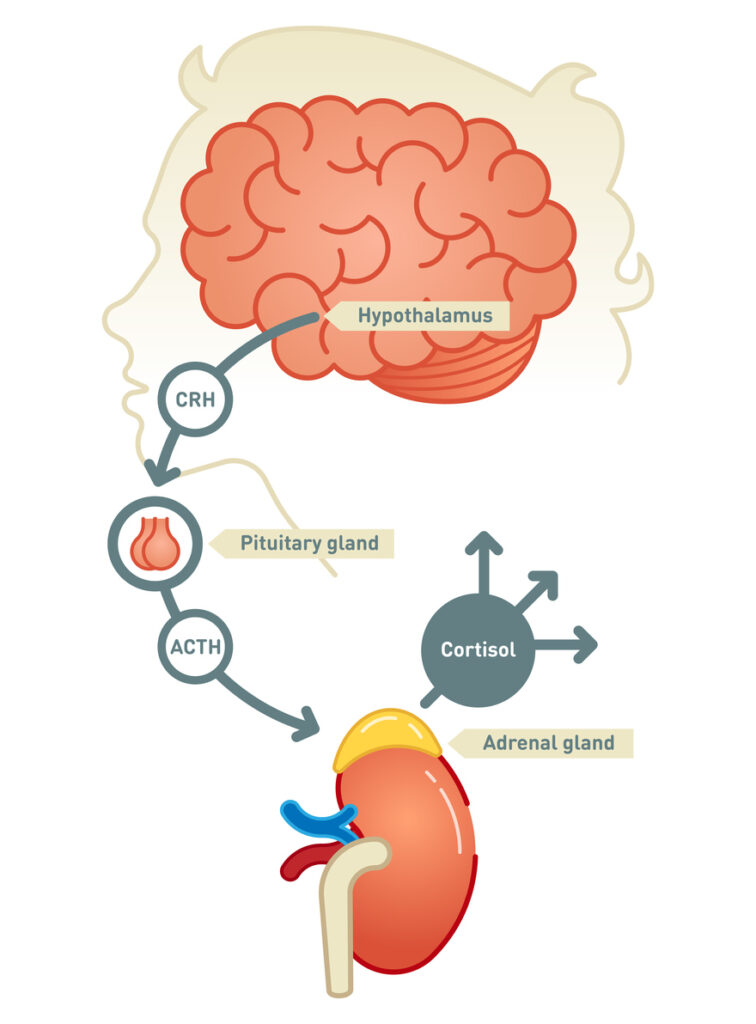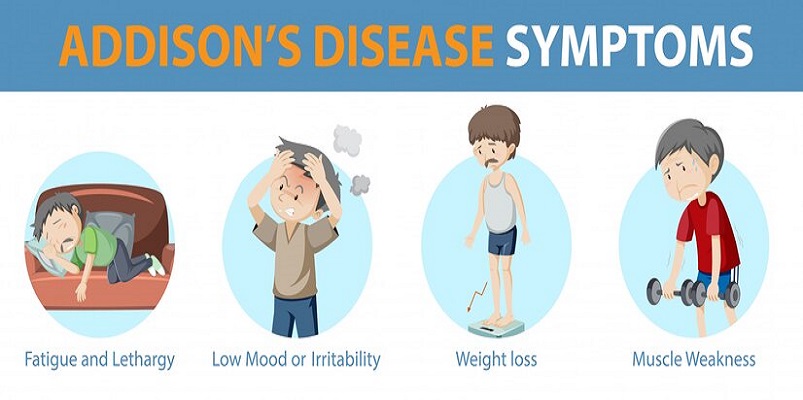You may have heard of Addison’s Disease, but do you really understand it? This article will shed light on this rare but serious condition that affects the adrenal glands. From its causes and symptoms to the available treatment options, we will explore all the essential aspects of Addison’s Disease. So, if you want to gain a deeper understanding of this condition and learn how it can impact someone’s life, keep reading.

What is Addison’s Disease?
Addison’s disease, also known as primary adrenal insufficiency, is a rare and chronic disorder that affects the adrenal glands. These small glands, located just above the kidneys, are responsible for producing vital hormones that regulate various bodily functions. When the adrenal glands fail to produce enough of these hormones, it leads to a range of symptoms and potential complications.
Definition
Addison’s disease occurs when the adrenal glands do not produce enough cortisol and often insufficient levels of aldosterone as well. Cortisol is an essential hormone that helps the body respond to stress, regulate blood sugar levels, and maintain blood pressure. Aldosterone, on the other hand, is responsible for regulating the balance of salt and water in the body.
Causes
Addison’s disease has various underlying causes, including autoimmune disorders, dysfunction of the adrenal glands, infections, and genetic factors. The most common cause of Addison’s disease is autoimmune disorders, where the body’s immune system mistakenly attacks the adrenal glands, damaging their ability to produce hormones.
Prevalence of Addison’s Disease
Statistics
Although Addison’s disease is considered rare, its exact prevalence is not well-established due to the condition’s often subtle symptoms and misdiagnosis. It is estimated that 1 in 100,000 people worldwide are affected by Addison’s disease, with slightly higher rates in certain regions.
Age and gender
Addison’s disease can affect individuals of any age, but it typically starts in individuals between the ages of 30 and 50 years. It affects both genders equally, with no significant difference between males and females in terms of prevalence.

Causes of Addison’s Disease
Autoimmune disorders
Autoimmune disorders, such as autoimmune adrenalitis or autoimmune polyglandular syndrome, are responsible for around 70-90% of cases of Addison’s disease. In these conditions, the body’s immune system mistakenly identifies the adrenal glands as foreign and launches an immune response, leading to their damage or destruction.
Adrenal gland dysfunction
Damage to the adrenal glands, which can occur due to infections, tumors, or injury, can lead to Addison’s disease. In some cases, surgical removal of the adrenal glands or radiation therapy can also result in adrenal gland dysfunction and subsequent hormonal deficiencies.
Infections
Certain infections, such as tuberculosis, fungal infections, or HIV, can cause inflammation and damage to the adrenal glands, leading to a decreased production of hormones. These infections predominantly affect the adrenal glands but can also affect other organs.
Genetic factors
In some cases, Addison’s disease may be caused by genetic factors. Certain gene mutations or inherited conditions, such as adrenoleukodystrophy or congenital adrenal hyperplasia, can disrupt the normal functioning of the adrenal glands and result in adrenal insufficiency.
Symptoms and Signs of Addison’s Disease
Fatigue and weakness
Chronic fatigue and generalized weakness are common symptoms of Addison’s disease. People with this condition may feel uncharacteristically tired even after getting sufficient rest and find it challenging to perform everyday activities.
Weight loss and decreased appetite
Unintentional weight loss can occur in individuals with Addison’s disease due to insufficient cortisol levels. This weight loss may be accompanied by a decrease in appetite, making it difficult to maintain a healthy weight.
Low blood pressure
One of the hallmark signs of Addison’s disease is low blood pressure, which can result in dizziness, lightheadedness, or fainting spells. The decreased production of aldosterone, a hormone responsible for regulating blood pressure, leads to a drop in blood pressure levels.
Darkening of the skin
Hyperpigmentation, or darkening of the skin, is another characteristic sign of Addison’s disease. It is most noticeable in areas exposed to sunlight, as well as in the creases of the palms, knuckles, lips, and inside the cheeks.
Salt craving
Due to the decreased levels of aldosterone, individuals with Addison’s disease often have an intense craving for salt. This is because aldosterone helps the body retain sodium, and its deficiency leads to salt wasting and the body’s increased demand for this vital mineral.
Nausea and diarrhea
Digestive symptoms, such as nausea, vomiting, and diarrhea, may occur in individuals with Addison’s disease. These symptoms can be attributed to the disruption of the body’s natural hormone balance and the impact on gastrointestinal function.

Diagnosis of Addison’s Disease
Medical history and physical examination
Diagnosing Addison’s disease typically begins with a thorough medical history and physical examination. Your healthcare provider will ask about your symptoms, medical history, and any family history of autoimmune disorders or adrenal diseases. They will also assess for the presence of physical signs, such as hyperpigmentation or low blood pressure.
Blood tests
Blood tests play a crucial role in diagnosing Addison’s disease. They measure the levels of cortisol, aldosterone, and other hormones in the blood. In individuals with Addison’s disease, these hormone levels are typically lower than normal.
ACTH stimulation test
The ACTH stimulation test, also known as the cosyntropin test, is a diagnostic test used to evaluate the function of the adrenal glands. It involves injecting synthetic ACTH, a hormone that stimulates the production of cortisol, and measuring cortisol levels before and after the injection. A suboptimal cortisol response indicates adrenal insufficiency.
Imaging tests
Imaging tests, such as computed tomography (CT) or magnetic resonance imaging (MRI), may be ordered to assess the structure of the adrenal glands. These tests can help identify any structural abnormalities or lesions that may be contributing to adrenal gland dysfunction.
Treatment Options for Addison’s Disease
Hormone replacement therapy
The cornerstone of treating Addison’s disease is hormone replacement therapy. This involves taking oral medications that replace the hormones the adrenal glands fail to produce. The most commonly prescribed medications include glucocorticoids, such as hydrocortisone or prednisone, and mineralocorticoids, such as fludrocortisone.
Medications
In addition to hormone replacement therapy, other medications may be required to manage specific symptoms or complications associated with Addison’s disease. For example, anti-nausea medications may be prescribed to alleviate digestive symptoms, while vitamin D and calcium supplements may be recommended to prevent osteoporosis.
Lifestyle changes
Making certain lifestyle changes can help manage Addison’s disease effectively. These include implementing a well-balanced diet with adequate sodium intake, exercising regularly, managing stress, getting enough rest, and practicing good sleep hygiene.
Emergency management
It is crucial for individuals with Addison’s disease to be prepared for adrenal crises, which can be life-threatening. Emergency kits containing injectable corticosteroids, such as hydrocortisone, should be carried at all times in case of acute illness, injury, or severe stress.

Complications of Addison’s Disease
Adrenal crisis
Adrenal crisis is a potentially life-threatening complication of Addison’s disease that occurs due to a sudden and severe deficiency of adrenal hormones. This can be triggered by illnesses, injuries, surgery, stress, or an inadequate increase in hormone replacement during times of increased demand. The adrenal crisis requires immediate medical attention and treatment with intravenous corticosteroids.
Osteoporosis
Prolonged hormonal deficiencies in individuals with Addison’s disease can lead to decreased bone density and an increased risk of osteoporosis. It is important for individuals with Addison’s disease to maintain adequate calcium and vitamin D levels, exercise regularly, and receive appropriate treatment to minimize the risk of osteoporosis.
Infertility
Addison’s disease can affect fertility in both men and women. Hormonal imbalances and the disruption of the menstrual cycle can make it challenging for women to conceive. In men, decreased levels of testosterone may lead to decreased libido and fertility issues. However, with appropriate medical management, many individuals with Addison’s disease can have successful pregnancies and healthy children.
Living with Addison’s Disease
Adherence to medication
Strict adherence to medication is crucial for managing Addison’s disease effectively. It is essential to take the prescribed hormone replacement medications as directed by your healthcare provider. Missing doses or abruptly stopping medications can lead to complications and a worsening of symptoms.
Self-monitoring
Regular self-monitoring is important for individuals with Addison’s disease to ensure optimal disease management. This includes monitoring blood pressure, weight, and stress levels, as well as recognizing any signs of adrenal crisis or worsening symptoms. Keeping a journal or using smartphone apps can help track these parameters effectively.
Dietary considerations
Following a well-balanced diet is essential for individuals with Addison’s disease. It is important to consume adequate sodium to compensate for salt loss caused by adrenal insufficiency. However, it is equally important to maintain a healthy intake of other essential nutrients, including potassium, calcium, and vitamin D.
Exercise
Regular physical activity can benefit individuals with Addison’s disease by providing increased energy levels, improving overall well-being, and reducing the risk of weight gain or muscle loss. However, it is important to consult with a healthcare provider before starting any exercise program to ensure it is suitable for your specific needs and limitations.

Support and Resources for Individuals with Addison’s Disease
Patient support groups
Joining patient support groups can provide invaluable emotional support, as well as a platform for sharing experiences, tips, and resources with others who have Addison’s disease. These support groups may be available locally or online, connecting individuals from across the globe.
Online communities
In addition to support groups, several online communities and forums exist where individuals with Addison’s disease can connect with others facing similar challenges. These communities can provide a sense of belonging and a wealth of knowledge and support.
Educational materials
Various educational materials, such as brochures, books, and websites, dedicated to educating individuals about Addison’s disease, are available. These resources offer comprehensive information about the condition, treatment options, lifestyle management, and coping strategies.
Addison’s disease is a chronic condition that requires ongoing medical management, but with appropriate treatment and lifestyle adjustments, individuals with this condition can lead fulfilling lives. It is important to seek early diagnosis, receive hormone replacement therapy, and closely monitor symptoms to prevent complications and improve overall well-being. By staying informed, connecting with support networks, and proactively managing the condition, individuals with Addison’s disease can enjoy an enhanced quality of life.
Watch This Video Below
Related Terms About Understanding Addison’s Disease
How Do You Detect Addison’s Disease, How Does Addison’s Disease Kill You, Understanding Addison’s Disease, What Is Addison’s Disease And How Do You Treat It